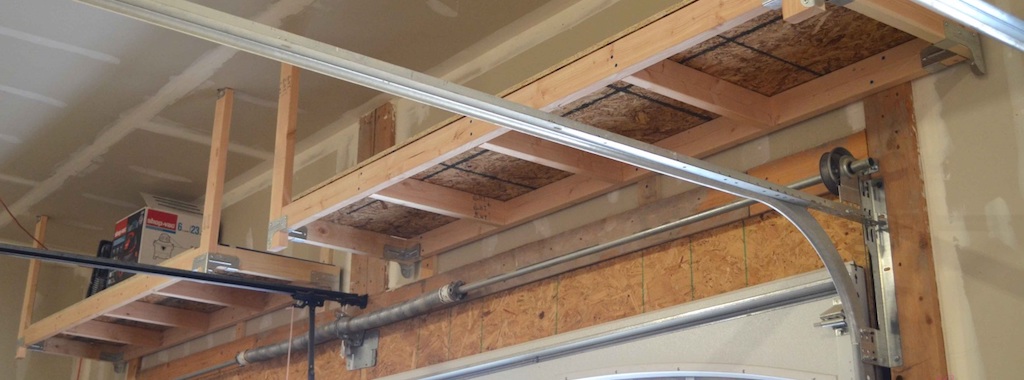
The garage door is an important component of any home design. It is important not only for the look and feel of your house, but also for the security and productivity. If you are considering installing a new garage door, you should take the time to consider the material, color, and finish that will best suit your needs. There are many choices, including wood and glass, that offer different benefits.
Garage doors are not only a security measure, but they can also increase the home's energy efficiency. If you're looking for something more modern, consider a style that matches your house. This includes sliding, tilt-up, and canopy styles. Modern designs often have clean lines and aluminum frames or acrylic frames with tempered glass panels.
You might consider a carriage-style entrance for a more traditional appearance. These doors look similar to French ones, but they hang from hinges. When they open, these doors look much like large barn doors. Their popular design is a result of their versatility. They can be found in many homes. There are two main differences: the clearance required for the door to open or close.

The carriage-style garage doors are made of wood. Some doors are all-wood and others have an aluminum frame with a fiberglass cladding. All-wood doors tend to be more expensive that their composite counterparts. But they are more durable and less likely to rot. They also tend to have better insulation, such as polystyrene backing or all-wood panels.
They are sturdy and a good choice for garage doors. They are resistant to rusting, rot and warping in harsh Midwest conditions. You can also paint them if they fade. Fiberglass may not be as strong as steel but is more likely to break and shatter than fiberglass.
The garage door's life expectancy will be affected by what type of spring you choose. Spring life is generally three to seven years. However, poor maintenance and heavy loads can reduce the lifespan of torsion springs. Additionally, springs that are located in humid areas will have a shorter cycle life.
Nearly all garage doors include at least one torsion Spring. These springs are used for tension storage and lifting the door. Once the door is raised, the springs are unwound. The springs can be attached to cables which wrap around grooves on the cable drums. Use lubricant to extend the life of the springs. Grease can cause wheels to "skate" when they are on the track. This can lead to a decrease in spring life.

Side-hinged garage doors are another common option. These doors are hinged on one side and can be manually operated, or they can be controlled with a remote. Swinging garage entrances are more expensive to automate. They are therefore primarily used in garages with limited headroom.
FAQ
What is included in a full kitchen remodel?
A full kitchen remodels more than just a new sink and faucet. You will also need cabinets, countertops and appliances as well as lighting fixtures, flooring, plumbing fixtures, and other items.
Homeowners can remodel their kitchens completely without needing to do major work. This means that no demolition is required, making the project easier for both the homeowner and the contractor.
Renovating a kitchen can involve a range of services including plumbing, heating and cooling, painting, and even drywall installation. Complete kitchen remodeling may require multiple contractors, depending on how extensive the renovation is.
Professionals with years of experience working together are the best way ensure a successful kitchen remodel. Many moving parts can cause delays in kitchen remodels. DIY is a good option, but make sure to plan ahead and have a back-up plan in case something goes wrong.
What are the biggest expenses in remodeling a kitchen?
When planning a kitchen renovation, a few major costs are involved. These include demolition, design fees, permits, materials, contractors, etc. Although these costs may seem relatively small, if you take them all together, they can quickly add up. However, when you add them together, they quickly become quite large.
Demolition is likely to be the most expensive. This involves removing old cabinets, appliances and countertops as well as flooring. You will then need to remove the insulation and drywall. You will then need to replace them with new items.
Next, hire an architect who will draw plans for the space. To ensure that the project meets all building codes, permits must be obtained. The next step is to find someone who will actually do the construction.
Once the job has been finished, you need to pay the contractor. You could spend anywhere from $20,000 to $50,000, depending on how large the job is. Before hiring a contractor, it is vital to get estimates from multiple people.
If you plan, you can often avoid some of these costs. You may be able get better material deals or to skip some of the work. You can save money and time if you are clear about what you need to do.
Many people attempt to install cabinets themselves. They think this will save money because they don't have to pay for professional installation services. Problem is, they often spend more time trying to place the cabinets themselves. A job can typically be done in half the time than it would take for you by professionals.
A cheaper way to save money is buying unfinished materials. Before purchasing pre-finished materials like cabinets, you must wait until all the pieces are assembled. By buying unfinished materials, you can start using them right away. You can always make a change if things don't go as you planned.
Sometimes, though, it doesn't make sense to go through all of this. Plan is the best way to save on home improvements.
Why should I renovate my house instead of buying a new one.
While houses may get more affordable each year, the square footage you pay is still the same. Even though you may get a lot of bang for your buck, you also pay a lot for that extra square footage.
It costs less to keep up a house that doesn't require much maintenance.
You can save thousands by remodeling your existing home rather than buying a completely new one.
Remodeling your home will allow you to create a space that is unique and suits your life. You can make your home more welcoming for you and your loved ones.
Is it cheaper to remodel a bathroom or kitchen?
Remodeling a bathroom and kitchen can be costly. It is worth considering the amount of money you spend on your energy bills each monthly.
An inexpensive upgrade can save you thousands of dollars every year. A few easy changes like adding insulation to ceilings or walls can reduce heating/cooling costs by as much as 30%. Even a simple addition can increase comfort and reduce resale costs.
The most important thing to keep in mind when planning for renovations is to choose products that are durable and easy to maintain. Material like porcelain tile, stainless-steel appliances, and solid wood flooring are more durable and can be repaired less often than vinyl or laminate countertops.
Altering old fixtures can also help reduce utility bills. Low-flow faucets and showerheads can reduce water consumption by as much as 50%. Replacing inefficient lighting with compact fluorescent bulbs can cut electricity consumption by up to 75 percent.
What's the difference between a remodel or a renovation?
A remodel is major renovation to a room, or a portion of a rooms. A renovation involves minor changes to a specific room or part of it. A bathroom remodel, for example, is a major undertaking, while a new sink faucet is minor.
Remodeling is the process of changing a room or part of it. A renovation involves only changing a portion of a room. A kitchen remodel might include the replacement of countertops, sinks as well as appliances, lighting, and other accessories. You could also update your kitchen by painting the walls, or installing new light fixtures.
What order should you renovate an existing house?
First, the roof. The plumbing is the second. Third, the electrical wiring. Fourth, the walls. Fifth, the floor. Sixth, the Windows. Seventh, the doors. Eighth, the kitchen. Ninth, the bathrooms. Tenth, the garage.
After you have completed all of these tasks, you will be ready to go to the attic.
You might consider hiring someone who is skilled in renovating your house. It takes patience, time, and effort to renovate your own home. And it will take money too. If you don't have the time or money to do all the work, why not hire someone else?
Renovations are not always cheap but can save you lots of money in long-term. Beautiful homes make life more enjoyable.
Statistics
- About 33 percent of people report renovating their primary bedroom to increase livability and overall function. (rocketmortgage.com)
- Following the effects of COVID-19, homeowners spent 48% less on their renovation costs than before the pandemic 1 2 (rocketmortgage.com)
- Windows 3 – 4% Patio or backyard 2 – 5% (rocketmortgage.com)
- According to a survey of renovations in the top 50 U.S. metro cities by Houzz, people spend $15,000 on average per renovation project. (rocketmortgage.com)
- 55%Universal average cost: $38,813Additional home value: $22,475Return on investment: 58%Mid-range average cost: $24,424Additional home value: $14,671Return on investment: (rocketmortgage.com)
External Links
How To
How to Remove Tile Grout from Floor Tiles
Most people don’t realize they use tile grouting. It is used in sealing joints between tiles. Many different types of grout are available today, each using a specific purpose. Here we will show you how to remove tile grout from floor tiles.
-
Before you start this process, make sure that you have all the necessary tools. It would be best if you had a grout cutter, a grout scraper, and some rags.
-
Now it is time to clean the grout and remove any debris or dirt that has gotten under the tiles. The grout cutter can be used to cut the grout and remove any loose tiles. Take care not to damage the tiles.
-
Once you have cleaned everything up, take the grout scraper and use it to clean off any remaining grout. Step 4 can be completed if you have no grout.
-
Now you can get on with the next step. One of the rags can be used to soak in water. Make sure the rag is fully wet. When the rag has become soaked, wring it out, so that excess water stays inside the rag.
-
Place the wet cloth on the joint where the tile meets with the wall. Keep the rag in place until the grout starts to separate. Slowly pull your rag towards yourself and continue to pull it back and forth, until all grout is gone.
-
Repeat steps 4 and 5 until all the grout has been removed. Rinse the ragout. Repeat the process if necessary.
-
After you have removed all grout, rub the tiles with a damp towel. Let dry thoroughly.